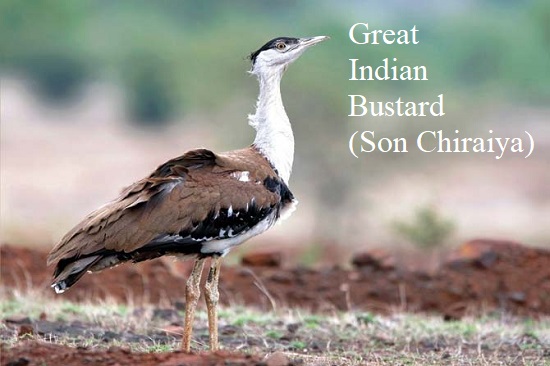The largest concentration of great Indian bustards, perhaps 175 birds, occurs in the state of Rajasthan.
Updated By: LatestGKGS Desk
Rajasthan: Son Chiraiya (GIB) Biological Features, Height, Weight, Food

Great Indian Bustard (GIB or Son Chiraiya) Biological Features, Population, Living Places, Height, Weight, Food
The great Indian bustard can easily be distinguished by its black crown on the forehead contrasting with the pale neck and head. The body is brownish and the wings are marked with black, brown and grey.
Males and females generally grow to the same height and weight but males have larger black crowns and a black band across the breast. They breed mostly during the monsoon season when females lay a single egg on the open ground.
Great Indian bustards are tall birds with long legs and a long neck; the tallest individuals may stand up at 1.2 metres (4 feet) high. The sexes are roughly the same size, with the largest individuals weighing 15 kg (33 pounds).
Although some of the reproductive behaviours of great Indian bustards are known, the finer details of nesting and mating, as well as migratory activities related to nesting and mating, are thought to vary greatly among populations and individuals.
Their diet ranges widely depending on the seasonal availability of food. They feed on grass seeds, insects like grasshoppers and beetles, and sometimes even small rodents and reptiles.
